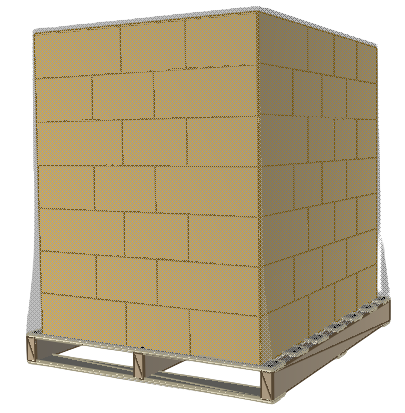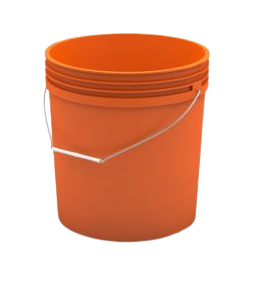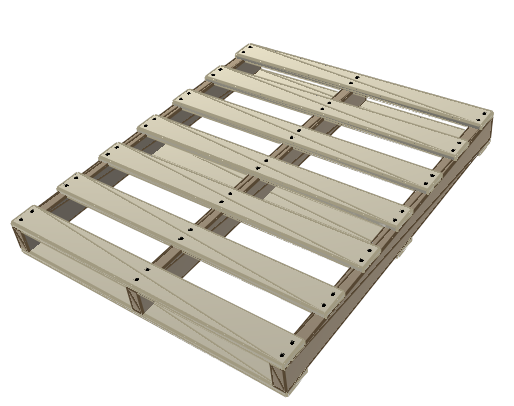Distribution Packaging Basics
What is distribution packaging?
Distribution packaging refers to the products and systems that move physical goods throughout supply chains, upstream from the point of sale to the end consumer. Its function is to support the efficient handling and distribution of goods. Almost all physical products are moved using distribution packaging.
What is a unit load?

A unit load is a term for a distribution packaging system consisting of many containers loaded atop a rigid platform. This system allows large quantities of product to be moved quickly and securely, while allowing the load to be broken down into smaller quantities for final distribution.
Over 80% of commerce worldwide is shipped in the form of a unit load. The unit load can be considered the typical distribution packaging system.
The unit load is a system of three interacting components: Service conditions, secondary packaging, and tertiary packaging.
The three elements of a distribution packaging system
1. Service conditions
The characteristics of the product being shipped and its distribution environment determine the form of distribution packaging that must be used. This includes factors such as storage conditions, handling conditions, and the resistance of the product to different types of mechanical stress. Unit loads must provide adequate protection without being over-engineered.


2. Secondary packaging
Secondary packaging has the function of protecting and transporting several units of sale at once. It can take many forms, such as corrugated boxes, sacks, pails, and bulk containers. Secondary packaging is often the most costly and the most resource-intensive component of the unit load.


3. Tertiary packaging
Tertiary packaging consists of the rigid platform on which secondary packaging is loaded and any stabilizers used to transport unitized product, such as stretch wrapping or adhesives. It serves the function of supporting the load of unitized product throughout distribution and protecting unitizing product from physical and environmental hazards during handling and distribution.

Tertiary packaging is the most commonly reused and recycled form of packaging, with many examples of products built to last through years of continuous use. The wood pallet is the most common form of tertiary packaging.
Next steps
Next, we will look at the ways a unit load system can be designed more effectively using a systems based design methodology.
